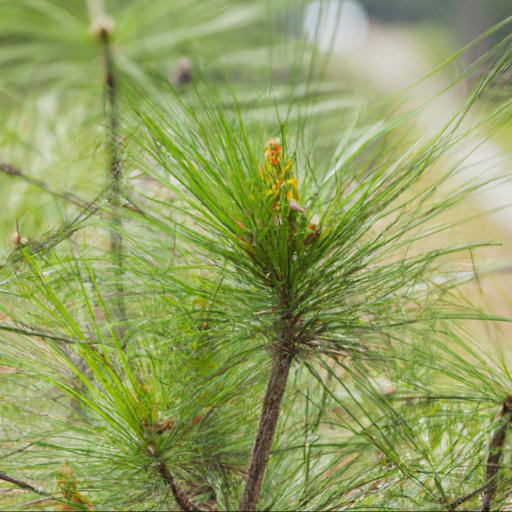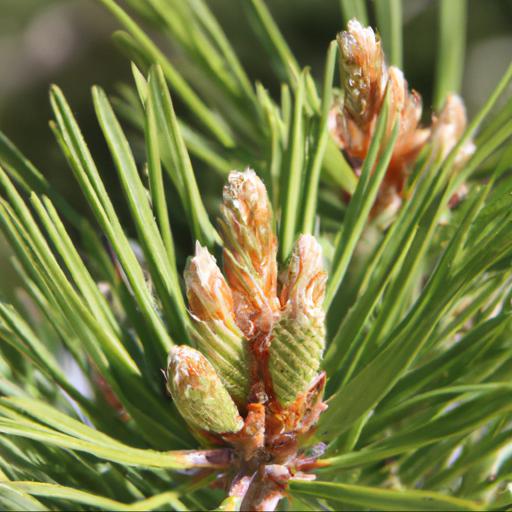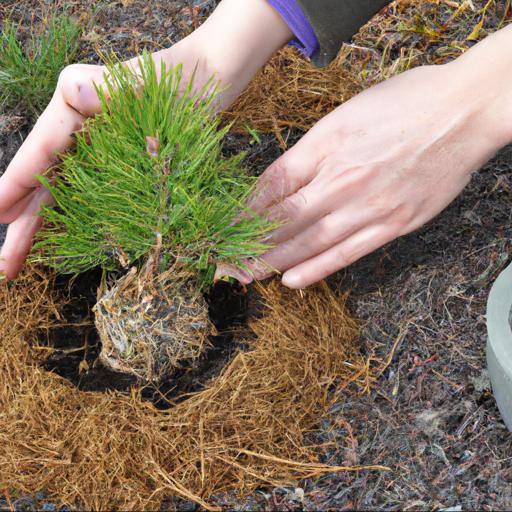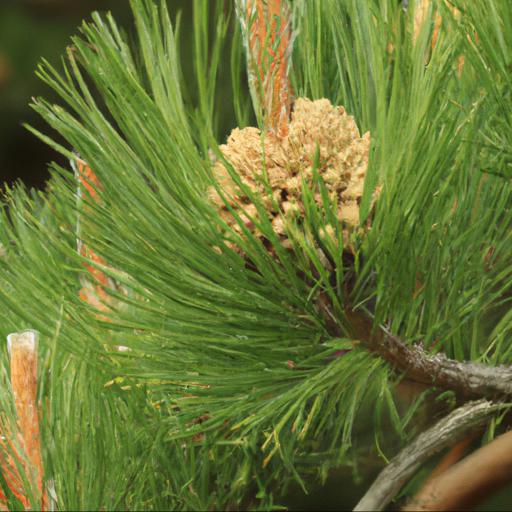Pinus mugo, commonly known as the dwarf mountain pine or mugo pine, is a hardy evergreen conifer native to the mountainous regions of Central and Southern Europe. It is a highly versatile tree, capable of surviving in a variety of climates and soil types, and is often used as an ornamental tree in gardens and parks.
Mugo pines are known for their slow growth, making them an ideal choice for small gardens and landscapes. They are also popular for their dense, dark green foliage and attractive, rounded shape. Mugo pines are also low-maintenance and require little pruning, making them a great choice for busy homeowners.
With proper care, these beautiful trees can provide a lifetime of beauty and enjoyment.
Characteristics of pinus mugo

Pinus mugo, otherwise known as Swiss mountain pine, dropmore dwarf and bogmug pine, is an evergreen conifer native to the mountainous regions of Central and Southern Europe and the Mediterranean. It is a medium-sized shrub or small tree, typically growing up to five metres in height, but capable of reaching as high as ten metres.
With its thick, scaly bark, heavy foliage, and relatively short height, Pinus mugo is an excellent choice for landscaping and garden design, as it provides aesthetic greenery all year round. In terms of foliage, Pinus mugo has a dense and bushy growth pattern, with short, stiff needles that are grey-green in color. These needle-like leaves are sharply pointed and tightly packed together, which gives the shrub a uniform and naturally attractive look, perfect for highlighting a garden or a particular area of landscaping.
Foliage will retain its colour, even during the winter months, providing a blue-green hue to any garden area. In addition, it has excellent drought resistance, which makes it a great choice for areas prone to water shortages. Finally, what makes Pinus mugo so desirable and versatile for gardeners is its hardiness and cold resistance.
It can tolerate temperatures down to -30°C, making it an ideal choice for gardens in cold climate regions with long winter months. Its root system is strong, providing an extra layer of stability no matter what weather or seasonal shifts are encountered.
This hardy species will thrive and survive storms, winds, and snow, making it a great choice for secure landscaping. In conclusion, Pinus mugo is an evergreen conifer that adds visual appeal to gardens and outdoor spaces.
This low-maintenance species is easy to maintain and highly resistant to diseases and pests, as well as cold winter weather and water shortages. Its foliage remains a vibrant blue-green hue year round, creating a stunning addition to any garden.
Benefits of pinus mugo

The pinus mugo, famously known as the mountain pine, is an evergreen conifer that is popular amongst gardeners for its low-maintenance attitudes and hardy nature. These shrubs are hardy to temperatures as low as -35 degrees Celsius and are incredibly resilient against harsh winter storms.
The benefits of having a pinus mugo in your garden start as soon as one is planted. They require little maintenance and will typically only need to be pruned every three years. Thanks to their evergreen nature, they are guaranteed to bring a splash of color to your garden all-year-round; and with some varieties, such as the mini mugo, they can get to a maximum height of only 1 – 2 meters, allowing them to fit into tight spaces in any garden.
The pinus mugo is capable of withstanding dry spells, which makes them ideal for gardens with little water access. These shrubs also colonize well, meaning they can be planted in groups to form a visual boundary or provide shelter in larger gardens.
It is important to note that despite their slow-growth rate, pinus mugo have deep roots, meaning they are capable of thriving in areas with a rocky or sandy soil. In conclusion, the pinus mugo is famed for its resilience and low-maintenance needs, and thanks to its highly adaptable nature, is seen in gardens all over the world. It is a great choice for any garden, requiring hardly any pruning and minimal water access, and promises to bring a splash of colour all year round.
How to plant and care for pinus mugo

Pinus mugo, better known as mugo pine, is an evergreen conifer species native to the mountain regions of Central and Southern Europe. It is an excellent choice of tree for UK gardeners seeking a robust and hardy option for their outdoor space.
Not only is pinus mugo hardy, but it adds a unique touch of texture and colour to any garden. Cultivation of pinus mugo is relatively easy and does not require a lot of maintenance. To plant pinus mugo, prepare a planting hole that is about twice the size of the root ball or container.
Once you’ve done this, gently place the tree into the hole and fill it in with the soil you removed. Water this area thoroughly and deeply, taking care to ensure the roots receive plenty of moisture. From here, a combination of mulch, weed suppression and regular watering should be sufficient enough to ensure healthy growth.
Because pinus mugo is a full to partial sun loving species, it requires good exposure to sunlight in order to thrive. Keep in mind that during summer months, these trees will require more frequent watering.
Regular pruning will help keep the tree shape in tact and encourage further growth. Since pinus mugo is a slow growing species, it is not recommended for areas that require instant fullness – this species will gradually thicken over time.
Pinus mugo is an evergreen species and can tolerate extremes of temperature and drought with relative ease. Pinus mugo is an excellent choice for a garden that is hardy, distinctive and low maintenance. Its unique characteristics and visuals bring beauty to any garden in the UK.
With careful yet limited cultivation, pinus mugo can be a sustainable addition to your outdoor space.
Common problems with pinus mugo
Pinus mugo, commonly known as dwarf pine, is a shrub or small evergreen tree native to the mountains in Europe and parts of Asia. It is widely used in landscaping and gardening owing to its hardy nature and attractive behaviour. Despite its hardy nature, common problems of Pinus mugo can occur if it is not cared for properly.
The most common issue with Pinus mugo is root rot. This happens when the roots of the tree have been damaged by over or under watering.
The damaged root tissue degenerates and prevents the tree from taking up vital nutrients and water. In order to prevent root rot, it is important to ensure that the soil is kept moist but not saturated with water.
In addition, avoiding overwatering and allowing the soil to dry between waterings can help to minimize problems with root rot. The second common issue with Pinus mugo is fungal infections. This can occur because of too much moisture around the tree and inadequate air circulation.
Fungal diseases such as needle blight and shoot blight can destroy the needles of the tree and stunt its growth. This can be prevented by ensuring adequate air circulation and keeping the soil around the tree dry.
Additionally, pruning the branches and removing any dead material can reduce the chance of fungal infections. Finally, the tree can be affected by insect infestations. Small bark beetles and aphids can feed on the needles of the tree and reduce the health of the foliage.
It is important to inspect the tree regularly and upon noticing an issue, contact a professional for advice and treatment. Properly caring for Pinus mugo is key in preserving the health of the tree and avoiding common problems.
Our video recommendation
Conclusion
Pinus mugo, commonly known as mugo pine, is a hardy evergreen conifer native to the mountains of central and southern Europe. It is an attractive and popular ornamental tree, with dense, dark green foliage and an upright, columnar shape. Mugo pine is tolerant of a wide range of soil types and climates, making it an ideal choice for a variety of landscaping needs.
It is also a low-maintenance tree, requiring minimal pruning and care. Mugo pine is a durable and long-lived tree, making it a great choice for those looking for a reliable and attractive addition to their landscape.
FAQ
What are the common uses of Pinus mugo?
The common uses of Pinus mugo include ornamental landscaping, windbreaks, erosion control, and as a source of timber.
What is the scientific name of Pinus mugo?
The scientific name of Pinus mugo is Pinus mugo Turra.
What are the characteristics of Pinus mugo?
Pinus mugo, commonly known as mugo pine, is a small, slow-growing, evergreen coniferous shrub or small tree. It has a dense, rounded crown with short, dark green needles and reddish-brown bark. It is tolerant of a wide range of soil types and climates, and is often used as an ornamental plant in gardens.
How is Pinus mugo propagated?
Pinus mugo is typically propagated through seed, cuttings, or layering.
What are the benefits of planting Pinus mugo?
The benefits of planting Pinus mugo include providing shelter and food for wildlife, improving air quality, reducing soil erosion, and providing a natural windbreak. Additionally, Pinus mugo is a low-maintenance evergreen shrub that can be used to create a beautiful landscape.
What are the potential pests and diseases of Pinus mugo?
Potential pests and diseases of Pinus mugo include pine needle scale, pine shoot moth, pine needle rust, and pine wilt.

